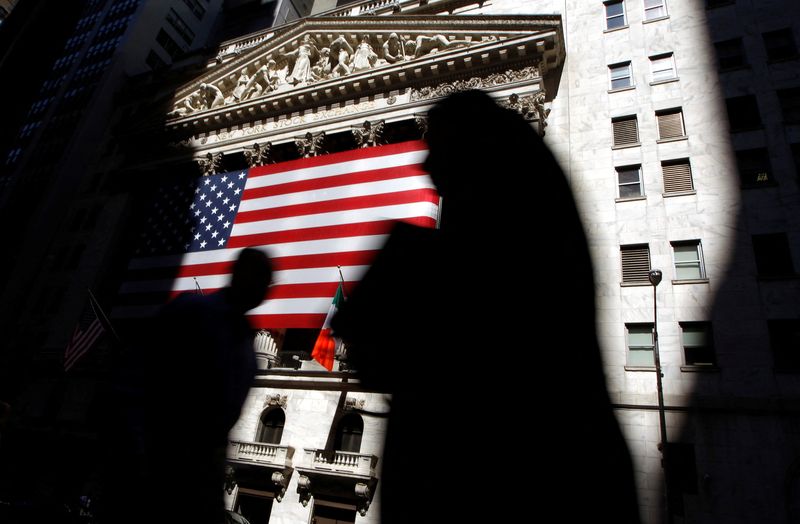Investing.com -- U.S. stock futures hold firm as traders gear up for a crucial monthly jobs report that could add clarity to the outlook for Federal Reserve policy decisions over the rest of 2023. Elsewhere, San Francisco Fed President Mary Daly suggests that a recent spike in bond yields may diminish the need for the central bank to further hike borrowing costs this year, while ExxonMobil (NYSE:XOM) is reportedly in negotiations over a blockbuster takeover of Texas shale group Pioneer.
1. Futures steady ahead of jobs report
U.S. stock futures held steady around the flatline on Friday ahead of the release of the all-important September jobs report.
At 04:49 ET (08:49 GMT), the Dow futures contract, S&P 500 futures, and Nasdaq 100 futures were broadly unchanged.
The main indices on Wall Street ended the prior session in the red, with the 30-stock Dow Jones Industrial Average losing 10 points or 0.03%, the benchmark S&P 500 falling by 6 points or 0.1%, and the tech-heavy Nasdaq Composite slipping by 16 points or 0.1%. However, stocks closed well off their lowest levels for the day, buoyed in part by an easing in a recent spike in U.S. Treasury yields.
Investors were also digesting first-time jobless claims data on Thursday that hinted at a lingering resilience in U.S. labor market conditions -- a prospect that could bolster the argument for the Federal Reserve to hike interest rates again in 2023 and keep borrowing costs higher for a longer period of time.
2. NFPs loom large
Traders are hoping the jobs market picture will become clearer with the publication of the Labor Department's ever-crucial nonfarm payrolls report at 08:30 ET on Friday.
Economists expect that the U.S. economy added 170,000 roles in September, down from 187,000 in the prior month, while growth in average hourly earnings is seen picking up to 0.3% from 0.2% month-on-month. The unemployment rate is projected to dip to 3.7% from 3.8%.
A parade of data this week has presented a nascent narrative of a tight, but possibly gradually cooling, labor market. Apart from a weaker-than-projected jump in weekly applications for unemployment benefits, private payrolls rose by less than anticipated last month and job openings unexpectedly ticked up in August.
Markets and policymakers alike will be on the lookout for any signs of strength in the jobs market. A central tenet of the Fed's recent aggressive campaign of interest rate hikes has been a slackening in labor demand, which in theory could contribute to slowing wage increases and help inflationary pressures abate.
3. Fed's Daly suggests "diminished" need for further rate increases
A cooling labor market and continued tightening in financial conditions may mean that there is less need for the Fed to lift interest rates again this year, according to Mary Daly, president of the central bank's San Francisco branch.
In the weeks since the Fed laid out a hawkish policy forecast at its September meeting, U.S. Treasury yields have soared to their highest levels in over a decade. The jobs data this week has heaped more fuel on the sell-off, as investors bet that rates will indeed remain elevated for longer. Yields move inversely to prices.
But, speaking to the Economic Club of New York on Thursday, Daly suggested that the run-up in long-term bond yields -- a trend that could make borrowing costs for businesses more expensive and ultimately slow the economy -- has "diminshed" the need for the Fed to take further action.
"[F]inancial markets are already moving in that direction and they've done the work. We don't need to do it more," Daly said. She added that while the surge in yields has been steep, it has not been disorderly, concluding "so far, so good."
According to Investing.com's Fed Rate Monitor Tool, the chance of a 25 basis point rate hike at the Fed's November gathering currently stands at a little over 20%. Meanwhile, the probability that the Fed will keep policy unchanged stands at about 78%.
4. ExxonMobil in talks to purchase shale driller Pioneer - media reports
ExxonMobil is currently in negotiations to buy Pioneer Natural Resources (NYSE:PXD) in what could be one of the the oil group's largest purchases in over 20 years, according to media outlets.
Citing people familiar with the matter, reports say that the blockbuster deal would be worth about $60 billion, with an agreement possibly coming as soon as in the coming days.
The Wall Street Journal was the first to unveil a report on the talks.
The move comes as Exxon aims to use record profits posted in 2022 to boost its presence in the sprawling and lucrative Permian Basin in Texas and New Mexico. Pioneer, which has market capitalization of roughly $50B, is the largest crude producer in Texas.
If completed, it would be the largest tie-up for Exxon since it merged with Mobil in 1999 and all but crystallize its position as the West's key oil major.
5. Oil prices on pace for steep weekly decline
Oil prices edged higher Friday, but were on course for their steepest weekly decline for months on concerns over a possible global economic slowdown and the associated hit to fuel demand.
Official U.S. data this week showed a sharp build in gasoline stocks, pointing to a potential decline in demand in the world's largest oil consumer. Attention now turns to the release of the U.S. monthly jobs report, with traders hunting for indications of resilience in the wider economy.
By 04:49 ET, the U.S. crude futures were 0.2% higher at $82.48 a barrel, while the Brent contract edged up by 0.2% to $84.25.
The U.S. crude benchmark was down 9% this week, heading for its sharpest weekly loss since April, while the Brent contract was down more than 11%, on pace for its biggest weekly loss since March.
